The Water Chestnut is a plant of contradictions. It is rare in parts of Europe where it’s native thus “endangered.” Europeans want to see more of it. But it’s “invasive” in North America where officials want to eradicate it. In its native range it’s rare because people ate most of it. Where it’s invasive officials say it not edible. That’s probably because a lawyer someplace is telling people not to mention it is edible or all kinds of liability could ensue (the same reason why our local zoo had to stop giving away manure.) By the way this “water chestnut” is not the water chestnut (Eleocharis dulcis) you find in Asian restaurants. That’s a sedge. This is a different species altogether, Trapa natans. They do, however, share a common name.
Here’s why plant officials don’t like the Water Chestnut in America: One acre of Water Chestnuts can turn into 100 acres in one year (and that’s including winter down time.) Without any local counter balance it does all the things some folks wish an invasive would not do: Drives out native species, hogs water surface, changes a body of water from thriving to near dead, makes waterways unnavigable and reduces recreation. (It has pointed seeds that can puncture a shoe and inflict painful damage to a bare foot… There’s that lawyer sweating liability again.)
Why did it become so endangered in some parts of Europe? Changes in climate for one thing, but also the sweet seed kernels can be eaten raw, roasted, boiled, or fried like a vegetable. They are also preserved in honey and sugar, candied, or ground into flour for making bread and confections. These water chestnuts have a tasty, delicious flavor similar to tree chestnuts. It was the main ingredient in traditional Italian risotto. Water Chestnuts have been eaten since antiquity and cultivated in Asia for some 3,000 years. The opposing European and North American views are best explained by a line from the 1967 movie Cool Hand Luke: “What we got here is a failure to communicate.”
Water Chestnut is found in Connecticut, Delaware, Virginia, Maryland, Massachusetts, Pennsylvania, New Jersey, New York, New Hampshire and Vermont. It is fiercely banned in many other states particularly the south with huge fines in place. The Water Chestnut’s introduction to North America is as muddy as some of the ponds it grows in. Best guess is it first came to the United States in 1874, perhaps at Harvard’s botanical gardens. It was first noticed by botanists outside the gardens near Concord, Massachusetts in 1879 (reports that it was found in 1859 are mistaken.) It was intentionally put in a pond near Sudbury River near Concord by a gardener who also put it in many other ponds including the Fresh Pond of the botanical gardens in Cambridge. By 1884 it was in Sanders Lake near Schenectady NY and had reached had reached western Massachusetts by 1920. In 1923 there was a two-acre patch on the Potomac near Washington D.C. From Massachusetts it spread to Lake Champlain in Vermont, the Nashua River in New Hampshire and the Connecticut River in Connecticut. Special problem areas today are The Bird and Sassafras rivers in Maryland, the Hudson River, the Connecticut River valley, and Lake Champlain. It has also been reported in Ontario and naturalized in Australia in New South Wales. Control measures can be expensive, such as the $5.25 million spent from 1982 to 2005 to clean-up Lake Champlain where there was a 300-acre infestation.
One reason why officials might be reluctant to mention that it is edible is that the plant easily picks up a variety of toxic metals. According to one report from India “despite varying levels of metals found in various fruit parts of T. natans, the metal accumulation in (the) kernel was alarming. However, metal content decreased significantly in various parts after boiling…” The report went on to say that using boiling to reduce the metals is important in the “exploitation of these aquatic crops to meet the demand of food and health perspectives for human beings…” So, grown in bad water it collects toxins but boiling reduces the problem. There is another reason to boil the seeds even though they can be eaten raw: Fasciolopsiasis. It’s a disease that can be transmitted from the surfaces of Water Chestnuts and other water plants. During the larval stage of their life flukes leave their water snail hosts. They swim away to form cysts on the surfaces of water plants, including the leaves and fruit of water Water Chestnut. If infected water plants are consumed raw or undercooked, the flukes can infect humans, pigs and other animals. It’s very common particularly where people and pigs live together and share similar water resources.
While the Water Chestnut seed has four horns its edible relative Trapa bikornis (Horn Nut) has only two. Still painful to step on though. As for the botanical name Trapa comes from Dead Latin’s calcitrappa, a four-pointed weapon (as the seeds have four points.) But that term came from a Dead Latin word for “thistle.” Natans means floating. Bikornis means two horns. The other common name, Water Caltrop, also comes from calcitrappa. A third species, Trapa rossica, is endangered. Should you be interested in having your own illegal kiddie wading pool of T. bikornis they are usually found fresh in Chinese markets in October and November. The seed is rich in carbs, fat, protein, sugar, and vitamins B1, B2, C, calcium, phosphorus and iron.
Green Deane’s Itemized Plant Profile: Water Chestnut
IDENTIFICATION: Water chestnut are a rosette of floating, fan-shaped leaves, each leaf having a slightly inflated stem. The roots are fine, long, profuse; the small 4-petalled flower is white The fruit is a large nut produced under the rosette having four sharp spines, or two depending on the species. The “chestnut” usually weights about six grams. They don’t float.
TIME OF YEAR: Seeds overwinter at the bottom of water bodies and germinate during warmer months producing stems that reach the water surface and produce rosettes. In the northeastern United States flowering starts in July and continues until the plants are killed by fall frost. Fruits ripen in about a month and can remain viable for up to five years some report twelve years. Each seed can produce ten to fifteen rosettes and each rosette may produce as many as twenty seeds.
ENVIRONMENT: An aquatic weed, it is found is ponds, lakes, and slow portions of rivers.
METHOD OF PREPARATION: Shelled seeds (nuts) are eaten raw, roasted, boiled, or fried. They are also preserved in honey and sugar, candied, or ground into flour for bread and confections.
HERB BLURB
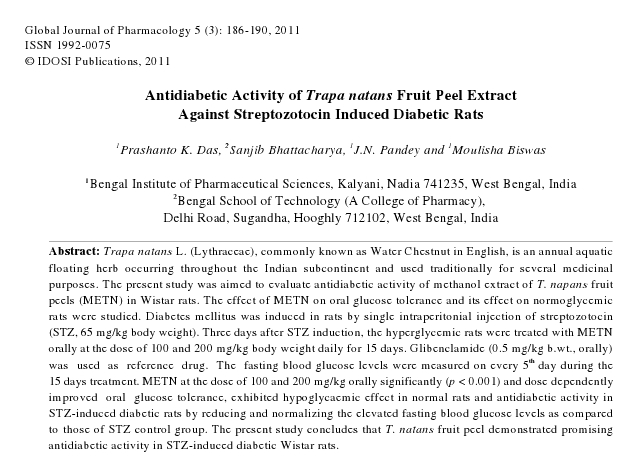

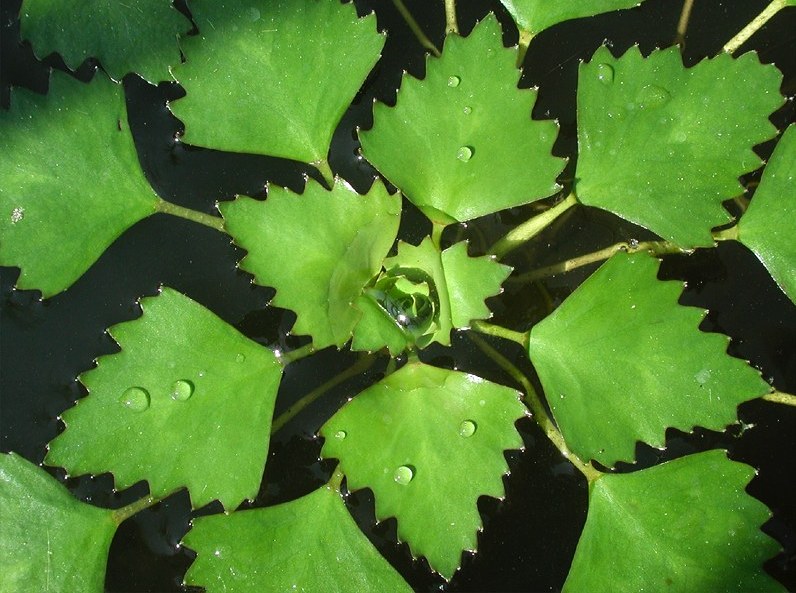
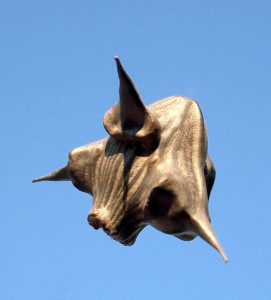
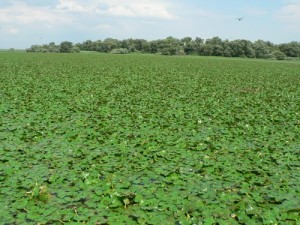
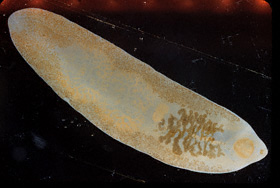
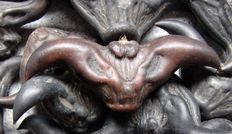

Water chestnuts aren’t really a viable option here in Tasmania but Sagittaria are a good alternative. Another very interesting post and should we ever move to the mainland to a more tropical clime, they will be right up there with mangoes on my “must have” list 🙂
I was looking for info on growing Chinese water chestnuts and kept coming across all the “WARNING EVIL INVASIVE” stuff on the net. It wasn’t until much later that I discovered there were multiple species given the same name. I could’ve used this article then. Your info is amazing.
Hello Green Deane,
I wonder where I can find these water caltrop and bring them home, grow them in my plastic containers of ponds. I live in central VA.
Thank you.
Sue
Hello Sue,
A Japanese friend of mine had given me some dried ones that she had bought 25 years ago and couldn’t buy again anywhere. I just found the funny looking nut, called ‘water caltrop’ or ‘li jiao’ (horn bull ) in New York’s Chinatown on Canal Street and Mott Street tonight, September 17. They can be bought apparently in October and November as well. In order to eat them, I was told to steam them or boil them in salted water for twenty minutes, then to peel off the shell and eat them like that. DO NOT EAT THEM RAW AS THEY CONTAIN POWERFUL TOXINS.
Isabelle, a lover of China, Chinese culture and food
You must be referring to a different species. The two I mention in the story are very edilbe raw and do not have to be cooked.
Hi Green Deane! I just discovered your website and am looking forward to experiment with eating several species this summer.
I work with The Nature Conservancy in upstate New York in the summer (still trying to land a permanent job). Part of what we do is removing trapa natans from our waters. The seeds are green when attached to the rosette and black/brown when they are dropped down to the water bed. Is there a difference between the two when wanting to eat them?
Thanks,
Cody
PS. Another reason I am very happy that I found your website is that I had no idea about the flukes! so thank you for that as well!
Cody,
I’m also in NY and wondering if we can dig up and eat these things?! Please let me know what you’ve learned about them.
I know exactly where you can get an abundance of these “devil head” chestnuts. In the Hudson River Valley, in Putnam County, NY along the riverfront in Cold Spring, NY they are EVERYWHERE. They are a menace.
is the waterchest nut leaves and other parts edible if boiled?
Not that I know of.
do you know where i can buy these? thank you
Trapa bikornis is sold here in Texas in seed form. I have purchased a bag, and have plans of growing a few in a container in my greenhouse.
Would you you like some seeds?
I’m trying to sort out this information. Three types of water chestnut are mentioned in the article. The most commonly edible water chestnut is the Trapa bikornis (Horn Nut), and bikornis the variety that can be found in Chinese food stores. “While the Water Chestnut seed has four horns its edible relative Trapa bikornis (Horn Nut) has only two.” And Eleocharis dulcis is the common “water chestnut” in Chinese food (NOT a water chestnutbut a sedge). It seems that the endangered water chestnut in Europe is the Trapa rossica (is this edible?).
Neither the bikornis nor rossica are found in abundance in North American fresh waters. It is Trapa Natans that chokes out native plants and grows at an alarming rate across lakes, ponds and rivers. If I’m reading your article correctly, this is also the variety that comes with the warning about toxic metal build-up and parasitic flukes. Metals can be boiled out, but you also say these nuts can be eaten raw? And what about the flukes? Should one not be concerned about this as well?
While it would be great to find a commercial market for Trapa Natans, this variety doesn’t appear to be the same kind made into candy and flour mentioned in the article (is that bikornis?). It would be helpful to break the article into three categories and speak about each of the varieties and their pros/cons individually.
I hope NO ONE is encouraged to grow Trapa Natans in their backyard pools or ponds. Volunteer at a local water chestnut (Trapa natans) pull to learn how destructive these plants are.
Is anyone working on using Trapa natans as a food source?
From what I have read it appears as though the seed is edible after boiling. Does anybody have a resource to test the heavy metal or other contaminants in the seed?
The section of the Sudbury River in Framingham MA that I live on is being totally overtaken by this species in the last 10 years. What is the best time of the year for pulling?
What is the difference between water Caltrop and Caltrop that grows in the ground? In Western Australia we have an abundance of Caltrop growing in the ground, they have a large long root, yellow flowers and grows in a rosette. The “seed” is extremely painful and looks just like the one on your website. These plants seem to multiply as you blink! Are these similar to the Water Caltrop and can they be eaten? If so, how do you prepare them, maybe grind them? I can’t imagine putting those sharp seeds in my mouth raw!
No. They are very different plants. Tribulus terrestris also grows wild on the Galapogas (where they provide backup food for the finches during years of drought) and under irrigation (as a weed in lawns, etc.) in Eastern Washington, have many seeds in each two-spined fruit — several fruits grow from a single flower.
Tribulis terrestris is a Mediterranean plant.
It has been used as a performance enhancer by Bulgarian weightlifters
Yes but it has the habit of shrinking testes.
My sons found these along the River today. Can we eat them?
Hi everyone,
I was wondering if any animals eat these. Also, what are some possible solutions to these in my local water sources? They cause many problems, not only to humans, but to the water quality also. Taking them by hand is very slow. I’ve heard that there is a chemical that may be able to kill it, but it will mix into the water. Thanks!
-Needing Answers
Are those plants illegal in South Dakota? I was hoping to get my hands on some to use as caltrop’s. I have a bullying problem and was hoping to use these as a way to discourage my attackers
HI,
Where can I buy a few to grown in my pond.. please advice I live in Phoenix, az
Thanks!!
You can’t legally buy these. They are a federally listed noxious weed and it is illegal to possess, grow, distribute, or transport this plant or any part of this plant.
This is an old post, but something is unclear to me.
Are you supposed to boil the seed with the shell on?
Also, for how many years is the seed still edible? Or does it cease to be edible after it falls off the plant, and blackens under the water?
Thank you,
These pods are occasionally found on the NYC ocean beaches. Are they still edible after floating down River, into the salty ocean water? If so, do we boil the chestnut with the pod on, or should the pod somehow be removed first? Thanks